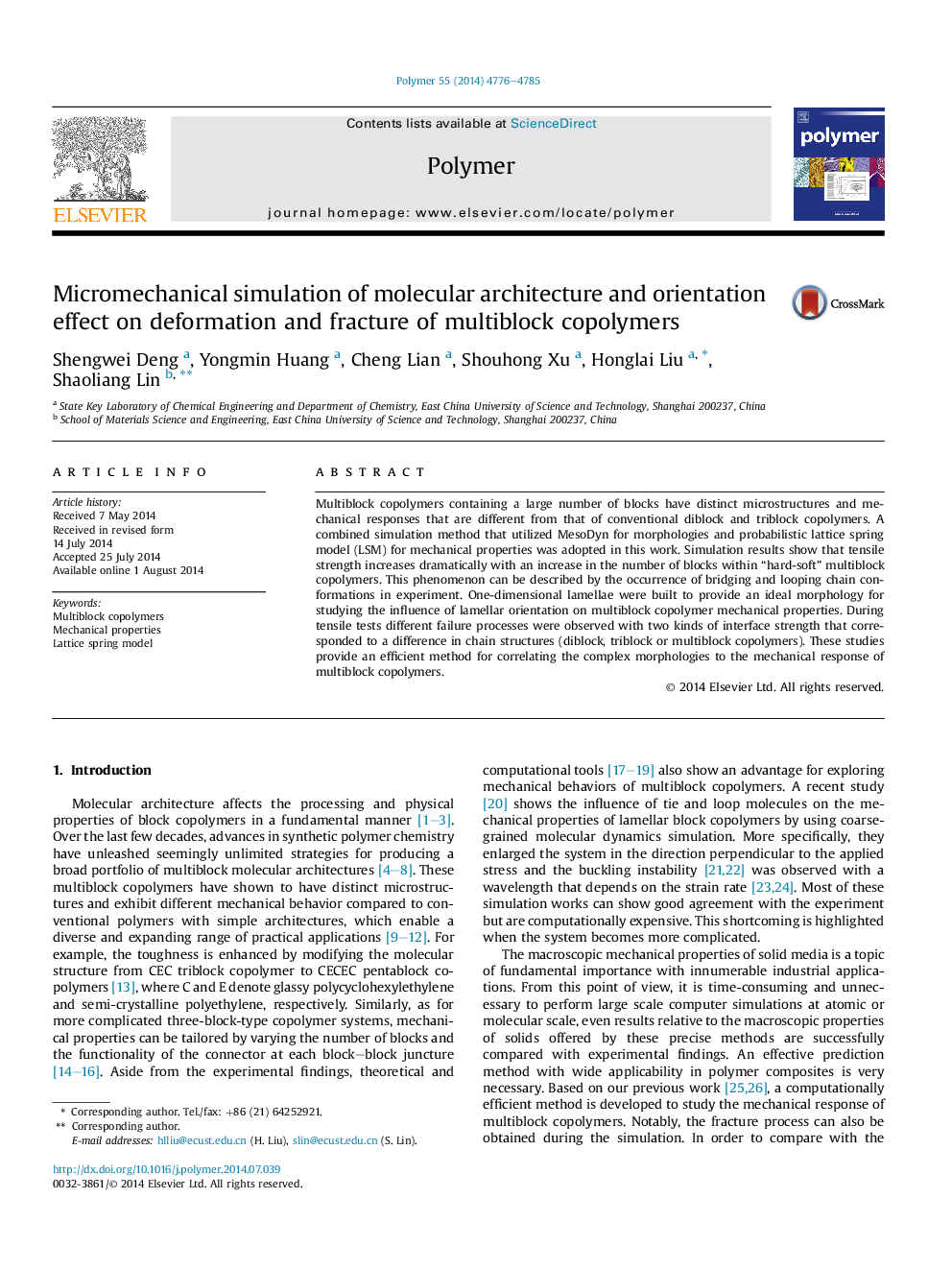| Article ID | Journal | Published Year | Pages | File Type |
|---|---|---|---|---|
| 5181049 | Polymer | 2014 | 10 Pages |
â¢An efficient method for correlating the complex morphologies to mechanical response.â¢Two kinds of fracture process were shown to explain novel experimental findings.â¢Stiffness is closely related to the hard phase rather than the molecular architecture.â¢The relation between the fracture strain and molecular architecture.
Multiblock copolymers containing a large number of blocks have distinct microstructures and mechanical responses that are different from that of conventional diblock and triblock copolymers. A combined simulation method that utilized MesoDyn for morphologies and probabilistic lattice spring model (LSM) for mechanical properties was adopted in this work. Simulation results show that tensile strength increases dramatically with an increase in the number of blocks within “hard-soft” multiblock copolymers. This phenomenon can be described by the occurrence of bridging and looping chain conformations in experiment. One-dimensional lamellae were built to provide an ideal morphology for studying the influence of lamellar orientation on multiblock copolymer mechanical properties. During tensile tests different failure processes were observed with two kinds of interface strength that corresponded to a difference in chain structures (diblock, triblock or multiblock copolymers). These studies provide an efficient method for correlating the complex morphologies to the mechanical response of multiblock copolymers.
Graphical abstractDownload full-size image
